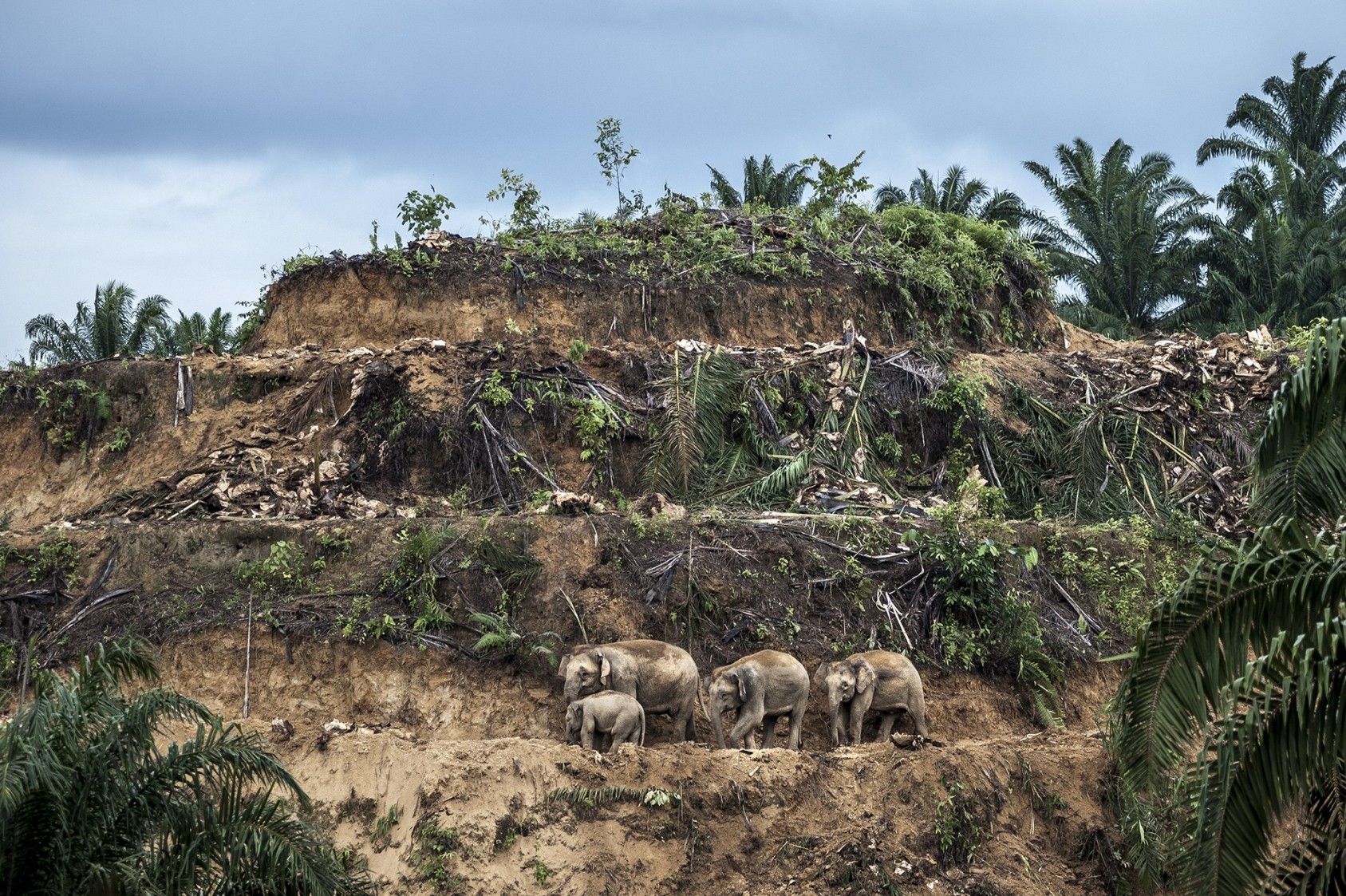
The Winners Of The NHM Wildlife Photography Awards
Palm-oil survivors
Aaron ‘Bertie’ Gekoski, UK/USA
Winner 2017, Wildlife Photojournalist: Single image
Nikon D700 + 80–200mm f2.8 lens at 120mm; 1/500 sec at f3.2; ISO 400.
In eastern Sabah, on the island of Borneo, three generations of Bornean elephants edge their way across the terraces of an oil-palm plantation being cleared for replanting. Palm oil is a lucrative global export, and in the Malaysian state of Sabah, where the majority of rainforest has already been logged (only 8 per cent of protected intact forest remains), the palm-oil industry is still a major driver of deforestation, squeezing elephants into smaller and smaller pockets of forest. Increasingly they wander into oil-palm plantations to feed, where they come into conflict with humans, with elephants being shot or poisoned. (In 2013, poison used in a plantation killed a herd of 14 elephants – the sole survivor, a calf, was found caressing its dead mother’s tusks.) Reports of elephant attacks on humans are also on the rise. Today, the fragmented population of Bornean elephants – regarded as a subspecies of the Asian elephant that may have been isolated on the island of Borneo for more than 300,000 years – is estimated to number no more than 1,000–2,000. Elephants form strong social bonds, and females often stay together for their entire lives. Here, the group probably comprises a matriarch, two of her daughters and her grand-calf. With the light fading fast, Bertie acted quickly to frame an image that symbolizes the impact that our insatiable demand for palm oil (used in half of the products on supermarket shelves) has on wildlife. ‘They huddled together, dwarfed by a desolate and desecrated landscape. A haunting image,’ he says.